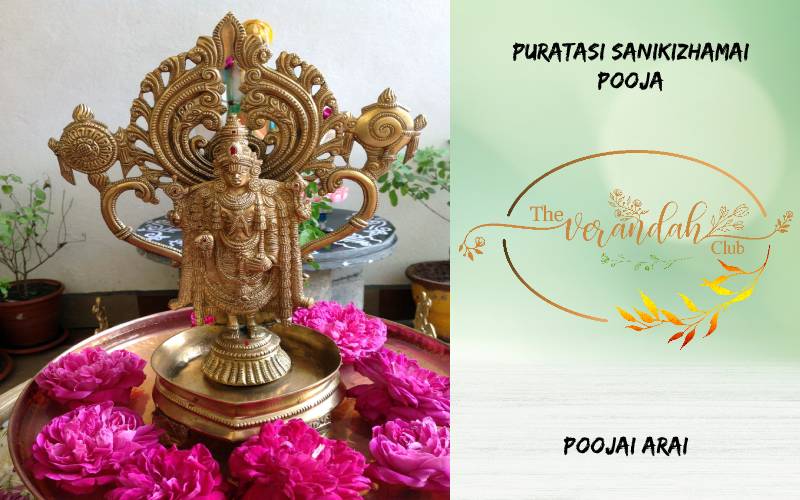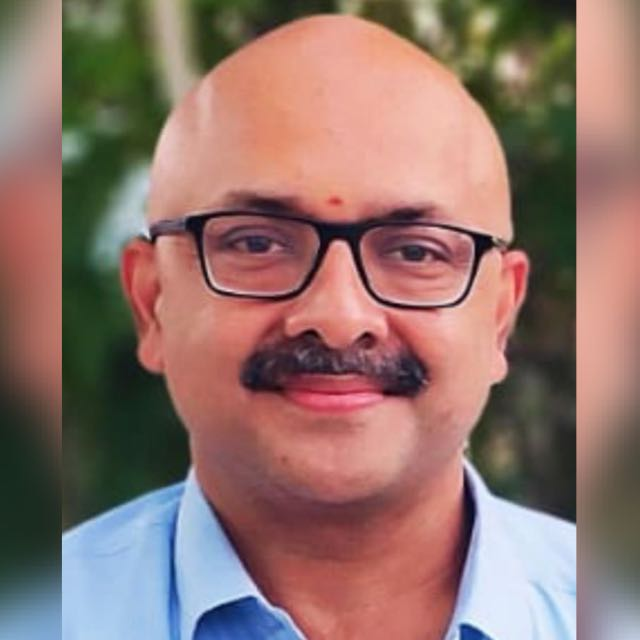
Kaliyuga Varadha Sriman Narayana is present as Lord Venkatachalapathy at Thirumala in the state of Andhra Pradesh (India). It has been the custom to pray to him on Puratasi Saturdays with a lamp made from rice flour dough. Families would get up early in the morning, clean up the house, and have a hair wash. They would apply themselves with Naamam (Vaishnavite symbol on the forehead) and wear traditional clothes. The residence would be mopped with cow dung paste and rice flour Kolam (Traditional pattern-drawing consisting of knots and dots) would normally decorate the household.
The entrance will be decorated with banana and mango leaves. Two lamps will be lit at the entrance of the household. A portrait or an image of Lord Srinivasa would be placed in an alter on a leaf. The lord would be decorated with flowers and fabrics. The most important ornament in the household would be adorning Lord Govinda and a Hundi (Coinbox) would be placed near his feet, for the Goddess of wealth is ever-resident at this sacred spot.
The rice flour lamp would be filled with ghee and the cotton wick will be lit by the head of the family. This lamp is normally decorated with turmeric and vermilion. Fruits, coconuts, betel leaves, sundal (Preferably black channa), sweet pongal, Puliyodharai (Tamarind rice), Milagu saadham (Pepper rice), Thengai saadham (Coconut rice), Thayir saadham (Curd rice), Ellodharai (Sesame rice), ulundhu vadai, milagu vadai, and laddu are offered to Lord Govinda.
Tamil Nadu is famous for Daasa-s who happened to be ardent devotees of Lord Vishnu. Members of the household would invite these Daasa-s to offer their prayers to Lord Venkateshwara. These Daasa-s would be clad in yellow and green with naamam-s on their forehead and wear Tulasi leaves on their neck. They would also carry a large conch and a bell along with them. In fact, every group would carry a lamp. These Daasa-s would light their lamp and sing bhajans in the home of their hosts. They would complete the pooja by offering an arati to the lord. This would be accompanied by the ringing of the bell and blowing of the conch. Such Daasa-s will be offered some vegetables, fruits, and money by the family of hosts.
The entire family would offer some money at the feet of the Lord. This money is normally dropped into the hundi. Now, let us look at the making of the hundi. A tiny silver Sombu (Pitcher) is washed and decorated with naamam. The opening is covered with a white cloth that has been already dipped in turmeric paste. An opening is made on the top to facilitate offerings. These offerings are normally deposited in Thirumala during the pilgrimage.
The devotees offering such prayers take a set of friends or relatives if the money so saved in the hundi is substantial. We need to remember that the hundi money can be used only for onward travel, food, and stay only. Several temples conduct this Puratasi Saturday prayers within their premises by facilitating the pooja. The priest and the Daasa-s act as Sutradhars (facilitators) for the devotees.
We must understand why Puratasi is chosen for this pooja. Lord Budha (Mercury) among the navagraha-s is an aspect of Lord Vishnu. The sun enters the Kanni raasi (Sun-sign Virgo) during the Tamil month of Puratasi. Budha is the authority for this sun-sign. This planet prefers a vegetarian diet and therefore a vegetarian stricture is followed during this month.
Lord Vishnu will bless devotees offering this Puratasi Shanikizhamai pooja with health, wealth, longevity, wisdom, and salvation.

Mr. Rajesh Govindarajulu is one of the founding members of the Verandah Club Pvt. Ltd. He is a leading columnist, historian, jeweler, entrepreneur, and a heritage enthusiast who is earnestly working to revive the past in the light of the present. Experiential learning about the history of Coimbatore is his main course of interest and he is also a panel member of many colleges in the city.
NEXT ARTICLE